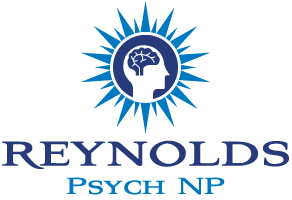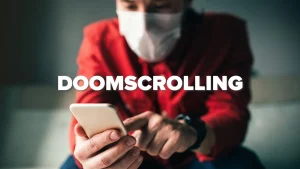When the world feels out of control, anxiety often follows. It might come from political instability, climate change, economic uncertainty, or personal struggles. Many people respond to these challenges with feelings of helplessness the sense that nothing they do will make a difference. This emotional state can drain motivation, reduce confidence, and lead to depression or burnout. But there’s good news: helplessness isn’t permanent. By understanding where it comes from and learning to shift focus toward what you can control, you can turn anxious energy into purposeful action.
What Is Learned Helplessness?
The term “learned helplessness” was first introduced by psychologist Martin Seligman in the 1960s. His research showed that when people (or even animals) experience repeated situations where their actions don’t change the outcome, they begin to believe they have no control even in situations where control is possible. Over time, this belief leads to passivity, avoidance, and hopelessness.
In modern life, learned helplessness can develop when people face repeated disappointments, failures, or crises that seem too large to solve. For example, seeing constant bad news about war, poverty, or environmental destruction can make individuals feel powerless. The brain starts to equate “trying” with “failing,” and anxiety grows stronger each time you feel like your efforts don’t matter.
How Helplessness Feeds Anxiety
Helplessness and anxiety are deeply connected. Anxiety often arises from uncertainty, while helplessness convinces you that no matter what you do, things won’t improve. This combination creates a painful cycle anxiety drives you to seek control, but helplessness tells you it’s pointless to try.
This mental loop can show up in everyday life. You might stop following the news because it feels too depressing, avoid making plans because you fear disappointment, or stay quiet during discussions because you feel your opinion won’t change anything. Over time, this erodes confidence and increases emotional distress.
Recognizing the Signs of Helplessness
Helplessness doesn’t always appear as total hopelessness. It can be subtle, showing up in habits, thoughts, or emotions such as:
- Feeling emotionally numb or disconnected
- Losing motivation or interest in things you once cared about
- Saying “what’s the point?” frequently
- Avoiding problems rather than facing them
- Constantly expecting negative outcomes
- Struggling to make decisions
Acknowledging these signs is the first step toward change. Once you recognize the pattern, you can begin to replace helpless thoughts with empowered actions.
The “Circle of Control” Mindset
A helpful tool for overcoming helplessness is understanding your Circle of Control, a concept popularized by Stephen Covey. It divides your concerns into three circles:
- Circle of Control: Things you can directly influence, such as your habits, words, and daily choices.
- Circle of Influence: Things you can affect indirectly, like your community, workplace, or relationships.
- Circle of Concern: Things you care about but can’t personally control, such as world events or government policies.
When people spend too much time focusing on the Circle of Concern, they feel powerless. Shifting attention to the Circles of Control and Influence restores a sense of agency. This doesn’t mean ignoring global problems it means directing your energy where it can make a real difference.
Turning Anxiety into Purposeful Action
1. Start Small
You don’t need to change the world overnight. Begin with manageable actions that align with your values. If you’re anxious about the environment, try reducing waste or joining a local cleanup effort. Small wins rebuild confidence and show that your actions matter.
2. Reframe Negative Thoughts
When you catch yourself thinking “nothing I do matters,” challenge that thought. Ask, “Is that absolutely true?” or “What small thing could make a difference right now?” Shifting your internal dialogue helps rewire your mindset from defeat to determination.
3. Practice Self-Compassion
Helplessness often comes with self-blame. You might feel guilty for not doing enough or ashamed for feeling weak. Self-compassion means treating yourself with the same kindness you’d offer a friend. Recognize that it’s okay to feel overwhelmed and that progress takes time.
4. Get Involved in Community Efforts
One of the most effective ways to combat helplessness is through collective action. Joining community projects, volunteering, or attending local meetings helps you see real change in motion. It also connects you with others who share your values, reducing isolation and giving you a sense of belonging.
5. Create Daily Routines
Structure helps bring order to chaos. Building consistent habits like journaling, exercising, or spending time outdoors reminds you that you can shape parts of your life even when larger events feel uncertain.
6. Focus on Values, Not Outcomes
Instead of fixating on results, focus on acting in line with your core values. You can’t always control what happens, but you can control how you respond. When your actions match your beliefs, you build integrity and inner strength.
7. Limit Exposure to Overwhelming News
Constant negative information fuels helplessness. Stay informed, but set boundaries. Choose reliable sources, check news only at set times, and balance it with uplifting content or personal stories of change.
8. Practice Mindfulness and Gratitude
Mindfulness helps you stay present rather than getting trapped in worries about the future. Gratitude practices such as listing three good things each day train your brain to notice progress instead of problems.
The Role of Social Connection
Helplessness thrives in isolation. Talking about your worries with supportive people can help you gain perspective. Sometimes others can see solutions you’ve overlooked. Emotional support also reduces stress hormones and boosts resilience. Surround yourself with people who inspire hope and take action, not those who constantly complain without trying to change things.
Rebuilding Confidence Through Action
Each time you take action, no matter how small, you send your brain evidence that your choices have impact. This weakens the feeling of helplessness. It might mean speaking up in a meeting, sending an email to your local representative, or setting a personal goal like learning a new skill. Success builds on itself, gradually replacing anxiety with empowerment.
When to Seek Professional Support
If feelings of helplessness persist for weeks or months and start interfering with your sleep, relationships, or work, consider seeking help from a therapist or counselor. Cognitive Behavioral Therapy (CBT) is especially effective in breaking patterns of helpless thinking. Therapy provides tools to challenge distorted beliefs and rebuild self-efficacy.
Real-Life Examples of Turning Anxiety into Action
Many people have turned their anxiety about global or local problems into meaningful contributions. Climate activists, community organizers, and social entrepreneurs often start with personal frustration and channel it into solutions. Even small acts like creating awareness campaigns or supporting neighbors can create ripple effects. These examples remind us that individual actions, when multiplied by many, can bring real change.
Conclusion
Helplessness may feel powerful, but it’s not permanent. Every person has the ability to shift from anxiety to action by focusing on what they can control, acting on their values, and connecting with others. When you stop waiting for the world to change and start doing what you can, you transform anxiety into momentum. Remember, no step is too small. Each positive action builds confidence, hope, and resilience turning powerlessness into purpose.







